 |
 |
Our enthusiastic and extremely knowledgeable perennials team is here to answer your questions and help you choose the best perennials for your situation. There’s always something in bloom for sun, shade, butterflies, birds or deer resistance as well as a variety of bulbs for your space.
Stroll through our time-tested favorites and introduce yourself to the newest varieties. We garden with perennials too; we love them and it shows!
|
49 found, showing page 2 of 4
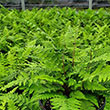
Height: 18 inches
Spread: 24 inches
Sunlight: partial shade, full shade
Hardiness Zone: 2b
Description:
An excellent choice for adding fine texture to garden beds and borders; features a low growing habit with arching green fronds throughout the season; easy to grow, requiring little to no maintenance; prefers partial to full shaded areas
Ornamental Features:
Lady Fern is primarily valued in the garden for its cascading habit of growth. Its ferny bipinnately compound leaves remain green in color throughout the season.
Landscape Attributes:
Lady Fern is a dense herbaceous fern with a shapely form and gracefully arching fronds. It brings an extremely fine and delicate texture to the garden composition and should be used to full effect.
This is a relatively low maintenance plant, and usually looks its best without pruning, although it will tolerate pruning. Deer don't particularly care for this plant and will usually leave it alone in favor of tastier treats. It has no significant negative characteristics.
Lady Fern is recommended for the following landscape applications:
- Mass Planting
- Border Edging
- General Garden Use
- Groundcover
- Naturalizing And Woodland Gardens
Planting & Growing:
Lady Fern will grow to be about 18 inches tall at maturity, with a spread of 24 inches. Its foliage tends to remain dense right to the ground, not requiring facer plants in front. It grows at a slow rate, and under ideal conditions can be expected to live for approximately 15 years. As an herbaceous perennial, this plant will usually die back to the crown each winter, and will regrow from the base each spring. Be careful not to disturb the crown in late winter when it may not be readily seen!
This plant does best in partial shade to shade. It prefers to grow in moist to wet soil, and will even tolerate some standing water. It is particular about its soil conditions, with a strong preference for rich, acidic soils. It is somewhat tolerant of urban pollution, and will benefit from being planted in a relatively sheltered location. Consider applying a thick mulch around the root zone over the growing season to conserve soil moisture. This species is not originally from North America, and parts of it are known to be toxic to humans and animals, so care should be exercised in planting it around children and pets. It can be propagated by division.
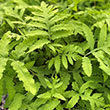
Tolerates moisture, Clay, rabbits, & deep Shade. Naturalizing. USDA 4-8
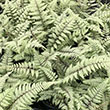
Upright silvery foliage. Maroon midribs. Tolerates seep shade. USDA 4-8

Large, fragrant soft pink blooms. Compact habit. USDA 4-8
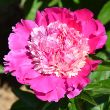
Plant Height: 18 inches
Flower Height: 24 inches
Spacing: 30 inches
Sunlight: full sun, partial shade
Hardiness Zone: 4a
Description:
An exceptionally fragrant selection; bright, salmon pink double flowers on tough, firm stems, look spectacular in the garden in mid to late spring; attracts butterflies and pollinators; an excellent choice for spring color in shrub borders or beds
Ornamental Features:
Madame Emile Debatene Peony features bold fragrant salmon flowers with pink overtones at the ends of the stems from mid to late spring. The flowers are excellent for cutting. Its glossy compound leaves emerge burgundy in spring, turning dark green in color throughout the season.
Landscape Attributes:
Madame Emile Debatene Peony is an herbaceous perennial with a more or less rounded form. Its medium texture blends into the garden, but can always be balanced by a couple of finer or coarser plants for an effective composition.
This is a relatively low maintenance plant, and should be cut back in late fall in preparation for winter. It is a good choice for attracting bees and butterflies to your yard, but is not particularly attractive to deer who tend to leave it alone in favor of tastier treats. Gardeners should be aware of the following characteristic(s) that may warrant special consideration:
- Disease
Madame Emile Debatene Peony is recommended for the following landscape applications:
- Mass Planting
- General Garden Use
Planting & Growing:
Madame Emile Debatene Peony will grow to be about 18 inches tall at maturity extending to 24 inches tall with the flowers, with a spread of 3 feet. When grown in masses or used as a bedding plant, individual plants should be spaced approximately 30 inches apart. The flower stalks can be weak and so it may require staking in exposed sites or excessively rich soils. It grows at a slow rate, and under ideal conditions can be expected to live for approximately 20 years. As an herbaceous perennial, this plant will usually die back to the crown each winter, and will regrow from the base each spring. Be careful not to disturb the crown in late winter when it may not be readily seen!
This plant does best in full sun to partial shade. It does best in average to evenly moist conditions, but will not tolerate standing water. It is not particular as to soil pH, but grows best in rich soils. It is somewhat tolerant of urban pollution. Consider applying a thick mulch around the root zone in winter to protect it in exposed locations or colder microclimates. This particular variety is an interspecific hybrid. It can be propagated by division; however, as a cultivated variety, be aware that it may be subject to certain restrictions or prohibitions on propagation.
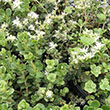
White blooms. Spreading succulent foliage. Native. USDA 4-8
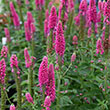
Bright pink blooms. Upright foliage. Clumping. USDA 4-8
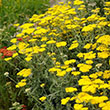
Carefree silver grey, non-spreading, fragrant foliage with canary yellow blooms. Good for containers. USDA 4-8
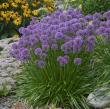
Compact, upright clump of glossy green leaves. Clusters of bright purple flowers blooms in mid-summer. USDA 4-8
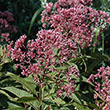
Pink blooms. Tolerates clay & wet soils. Native cultivar. Naturalizing. USDA 4-8
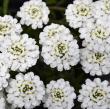
White blooms. Uniform mounding evergreen groundcover. USDA 4-8
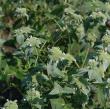
PYCNANTHEMUM MUTICUM 1 Gallon | Mountain Mint | Pink blooms. Fragrant silvery foliage. Naturalizing. Native. USDA 4-8
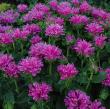
Fragrant and drought-tolerant. Attracts hummingbirds & butterflies. Deer resistant. USDA 4-8
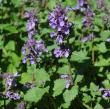
Prolific blue blooms. Fragrant, soft, fine textured foliage. Compact. USDA 4-8
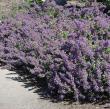
Lavender blue blooms. Fragrant foliage. Naturalizing. USDA 4-8
49 found, showing page 2 of 4









